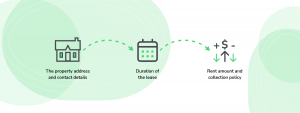Home | News and Insights | How to Write a Model Tenancy Agreement
PUBLISHED
22nd May, 2024
Renting out your property can be a lucrative prospect, as it offers a great way to bring in additional income. However, before you seal the deal with a new tenant, it’s essential to have a detailed, well-drafted model tenancy agreement in place. The agreement is a legal document that protects both landlords and tenants, ensuring that the terms of the tenancy are laid out. With clear terms in place, you can start your tenancy off in the right way, and minimize the risk disputes. See how to write a model tenancy agreement with all the necessary information in this guide.
A tenancy agreement is typically a written document established between a landlord and a tenant that specifies the terms and conditions of the lease agreement. This agreement encompasses key aspects of the tenancy terms, including the rent payment terms, security deposit, and the obligations of both the tenant and the landlord.
Tenancy agreements are important for both parties as they protect tenants and landlords from any disputes by clearly setting out the expectations they should follow. They establish a positive relationship between landlords and tenants, reducing the risk of any legal repercussions from either party.
Once the tenancy agreement is signed, it becomes a legally binding document. Prospective tenants should carefully review the agreement before signing to ensure they understand all the terms. If any clauses are unclear, they should discuss them with the landlord.
There are several details that can be included in a tenancy agreement, depending on the specific circumstances of the property and agreement. These details might include:
Unlike some legal documents, you don’t need the help of a solicitor to create a tenancy agreement, you can do it yourself. However, it’s important to ensure that you include all the relevant details and that the document does not contain any illegal clauses. A good way to do this is by using a model tenancy agreement template.
eSign’s tenancy agreement template has all the necessary information to provide you with a clear and legal document. It can also save you a significant amount of time. Which is particularly beneficial if you are a landlord with multiple properties for rent. You can simply tailor each document to the specific details of each property and tenant with a wide selection of customizable fields.

Before you start creating your tenancy agreement, there are a few important factors that you should consider.
When drafting your tenancy agreement, it is beneficial to research the local laws and regulations that govern rental agreements in your area. Tenancies can have different legalities in different countries and locations. So, it’s important to know the laws that apply to you to ensure your agreement conforms to any legal requirements. If it is not, should any disputes arise, it could be that the agreement is voided.
All parties must be clearly identified in a tenancy agreement, this includes the landlord, the tenant, and any other individuals who will be living at the property during the lease. In addition, the full details of the property should be included, with its name and mailing address. If it is an apartment, keep in mind that you will also need to reference the specific unit number. You should always confirm that every detail is correct before signing or sending the document for signature by the tenant.
It’s important to consider the terms and conditions you want to include in the agreement in advance, rather than as you draft the document. This will give you the chance to properly think about the terms you are happy with, the level of responsibility you are going to have, and the responsibilities of the tenant.
For example, will pets be allowed at the property? And will you permit the tenants to alter the premises? All details no matter how big or small should be accounted for. To make sure that there are no gray areas, and the tenants have a complete understanding of what they are agreeing to when they sign.

The exact contents of a tenancy agreement can vary depending on the type of property you’re letting, how long for, and who you’re letting it to. Below is a general overview and structure for how to write a tenancy agreement.
The document you should state which property the agreement is referencing by having the full address written out at the start. Also, contact details for both parties are essential. If you don’t provide at least your name and address, you could face a fine.
A tenancy agreement requires specific dates for the start and end of the tenancy. Avoid using vague language when providing a time frame, such as ‘this lease will run for 12 months’. This can cause confusion, so be sure to state the day, month, and year that the lease will start and finish. You may also want to include in this section the steps the tenant should take if they’re interested in renewing their lease. Or the process for notifying you that they will be moving out of the property once the agreement runs out.
Tenants not paying their rent is one of the biggest challenges landlords face. In order to ensure that you’re in the strongest legal position should they not pay, the rent amount and payment terms should be clearly explained in the agreement. In relation to this, you should include:
Despite it not being a legal requirement, most tenancy agreements require a security deposit (often equivalent to the cost of one month’s rent). A security deposit can help protect landlords from multiple liabilities. In the event that a tenant misuses a property, such as causing excessive damage.
It’s always beneficial to outline the rights and responsibilities of both the tenant and the landlord. To help minimize the risk of an accidental breach of the terms. Examples of responsibilities you might want to include for the tenant are:
Examples of responsibilities you may want to list for you as the landlord are:
This section will cover factors like how much notice you need if a tenant decides they want to end their tenancy early. As well as how much notice you will give them if you intend on eviction. It should include details of what will happen to the tenant’s security deposit in these instances.
The main aim of a model tenancy agreement is to protect the landlord and the tenant. Therefore it’s important for both parties to sign it in order for it to be valid. All tenants over the age of 18 will be required to sign the document. It is the last stage of solidifying the contractual obligation of both parties in relation to the rental property.
A model tenancy agreement is an important legal document that requires various key details to be included as we have discussed above. eSign’s agreement template simplifies the process of creating, sending, and signing tenancy documents with a pre-defined structure. This ensures that all the important information is included. But it can be easily customized to the specific requirements of your property and agreement.
Additionally, as an industry-leading electronic signature provider, eSign can support your digital document needs and ensure the signature capture process is as quick and seamless as possible for landlords and tenants.
Our e-signature solutions are highly secure with a full audit trail and digital certificate provided to validate the identity of the signers and authenticity of the document. Which is an extremely important and useful feature for landlords who need to guarantee the legal validity of their tenancy agreement.
Try the eSign platform for yourself by registering for our 14-day free trial today. This will allow you to experience the features and see how it can help you with your eSignature and digital document requirements. If you have any questions about how eSign can help with the specific needs of your business, don’t hesitate to contact us. Our team of specialists are on hand to support your digital transformation.